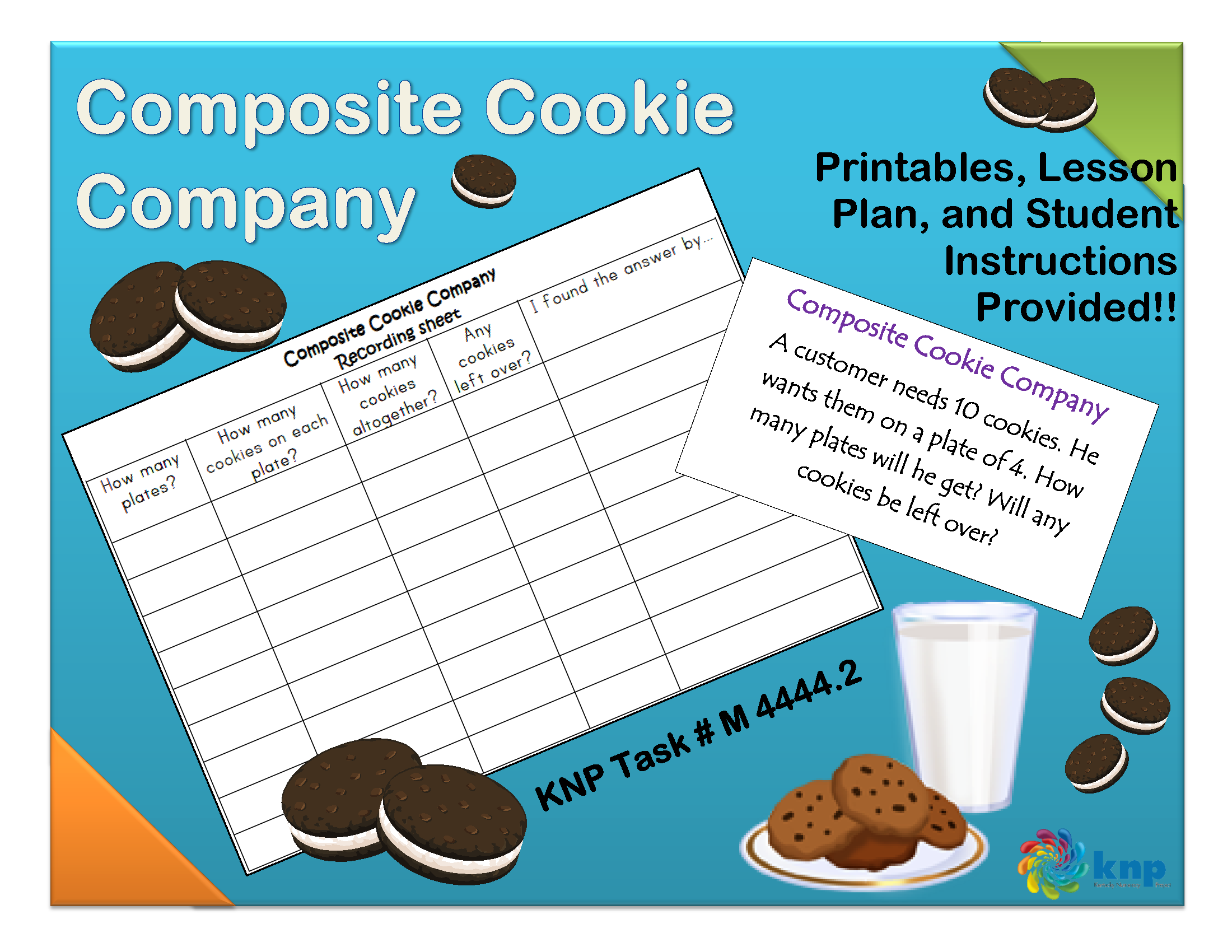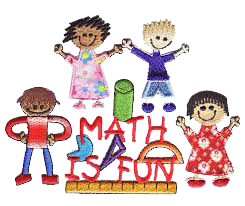“Composite Cookie Company”
KNPIG ID #M 4444.2
What's this activity about?
You are working for the Composite Cookie Company and the orders are coming in! It is fun for kids to pretend to work for a cookie company and also practice their multiplication mental math skills. Your child will draw a task card where they will be directed to either make equal groups of cookies or share cookies into equal groups and see if there are any leftovers. This activity is a fun way to spend time with an important child in your life while helping them explore and build strategies for solving real world problems using multiplication and division. Now it’s time to get to work!
What materials do we need?
Printable task cards, recording sheet and plate and cookie cutouts (you can use paper plates and beans, bingo covers or even real cookies in place of the printable plate and cookie cutouts)

How do we play?
- Draw a card and read the task. It may be an order to fulfill or a task to complete.
- Use the plates and cookies cutouts to help you find the answer.
- Record on your recording sheet and repeat until your sheet is full.
Where’s the Math?
The math in this game goes along with the math your child is learning in school. Every card your child chooses will present a real world situation in the Cookie Company that can be solved by multiplication or division. It is important for children to understand how to represent and solve problems involving multiplication and division. You child is learning how to understand multiplication by thinking about groups of objects and division by thinking about how one group can be divided into smaller groups. When you are filling out the Recording Sheet, this imitates the way a student might work through a multiplication or division problem the traditional way. Additionally, the Left-Overs section on the recording sheet introduces the concept of remainders in division problems without formal instruction.
Your child follows developmental stages when learning how to read, from the introduction of letter sounds, then how those sounds fit together to form simple words and how words fit together to form sentences before they are fluent readers. Just like learning how to read, learning how quantities relate to each other before learning the math “facts” supports developmental learning paths and will help them learn more easily as they move forward.
Things to Think About:
As you use this activity with kids, remember BE PATIENT. Giving children time to think will help them develop more critical thinking skills and deeper understanding. Research shows if children understand what is happening to quantities and how they change, later on, their basic math facts will be easier to learn and memorize.
Listen carefully for how they are using counting strategies: are they counting by ones or skip counting? Skip counting is counting by skipping equal groups, like counting by multiples of fives- 5, 10, 15, 20…You can also listen for “stress” counting. Stress counting would sound like counting by ones, but the child would emphasize the numbers they would say if they were just skip counting. If your child is having trouble getting started, rephrase the problems on the card and encourage them to use the plates of cookies. Once they have the plates arranged correctly, let them know all they have to do is count now. Your child will get used to answering questions on the Recording Sheet as you go along. These are all essential questions children use when learning how to add equal groups.
You ultimately would like your child to skip count or stress count. You can help them along by letting them figure out the total, then modeling stress counting. If they total 4 groups of 3 to 12, you may want to model stress counting like this- “Twelve is correct. Let’s count them again, this time together. One, two, THREE, four, five, SIX…” and so on.
If your child is successfully stress counting and seems ready to move to skip counting, you could encourage this by asking “How could we get to twelve faster, but still count in groups of three? Could we skip some numbers in between? Let’s try that together. Three, six, nine, twelve… That was fast!” Continue to model this method so your child is comfortable at least doing it along with you.
Feedback
Send us your thoughts and ideas about these activities. Email the KCM

